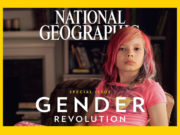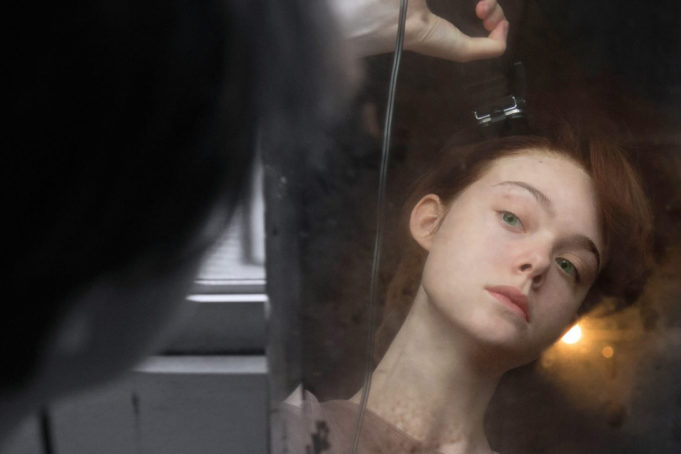If you’ve heard of About Ray odds are you may not have seen it as it only received a staggered release outside the United States. Starting with the Toronto International Film Festival in September 2015, it made its rounds through the festival circuit for over a year but still no official U.S. release date. It did, however, make a brief splash online due to its star-studded cast but also due to the seemingly ignorant remarks made by its director Gaby Dellal, who seems to be fairly inexperienced in filmmaking, so it makes one wonder why such a novice was handed the reins to a mega-cast and a highly sensitive subject.
“One element that caused a buzz on the Internet was that, yet again, a cisgender actress was given the role of a trans person.”
One element that caused a buzz on the Internet was that, yet again, a cisgender actress was given the role of a trans person. Director Gaby Dellal came under fire after attempting to respond to this issue by saying: “The part is a girl and she is a girl who is presenting in a very ineffectual way as a boy.” Many felt the statement was ignorant, insensitive, and just blatant misgendering. The verbiage was wrong and insensitive but I do understand why a cisgender actress was selected for the role given the timeline in which the film was taking place in Ray’s life. However, many expressed concern about how could someone who was not only so wet behind the ears regarding filmmaking but clearly blindly ignorant of the delicate and integral aspects of being transgender truly helm a picture in which the entire premise is about a person who is transgender, who is trying to transition, and how their family and world around them is impacted.

The writer, Nikole Beckwith, may have tapped into her theater experience in presenting a lesbian couple and a family element and yet also captured the subtle nuances that family and others have when speaking to and about trans people. Combine an award-winning writer with heavy-hitting cast members like Susan Sarandon, Naomi Watts, Elle Fanning, and Linda Edmond and you come up with a piece that seems to capture a truth about families, change, fear of the unknown, transitioning, and ignorance within our own community.
A surprising element of our own LGBT community is an overwhelming lack of support and understanding from the LGB members. Many are confused and unaware of what is and what it means to be transgender. Many, in fact, are outright belligerent and dismissive of the trans community despite having faced (and still face) immense bigotry and inequality themselves. This was expressed with alarming perfection by Susan Sarandon’s character, Dolly (as listed on IMDB but called Dodo – like the bird – throughout the film), who is in a lesbian relationship with Fran (mostly referred to as Honey in the film) and mother to Naomi Watts’ character, Maggie. Maggie is the single mother of Elle Fanning’s character, Ray. Sarandon’s character, Dolly/Dodo, can’t understand why Ray needs hormones and surgery and figures Ray is just a lesbian without really knowing it yet and even goes so far as to equate surgery to the fight against genital mutilation.

What made this seem so genuine was the inconsistent use of proper pronouns. The stubborn refusal to use male pronouns by some, slipping up and misgendering but making a genuine effort to use the right pronouns. You can see the strain on Ray and the family in general during peak moments. Even the general family oddities and quirks make it genuine. The overall directing and cinematic imagery leans more towards the artsy style that caters to the film festival viewership there are some striking moments such as when Ray needs to use the bathroom at school.
A negative aspect, albeit minor in the overall scheme of the film, was the use of ace bandages for binding. This film doesn’t necessarily put a date into play although it was filmed in 2014. We can easily assume from context clues, however, that we’re pretty current so there’s no reason that a parent who is supporting a child to start HRT wouldn’t assist in getting a binder at the very least. Using an ace bandage for binding has been shown to be harmful with excessive or long-term use and showing it in popular media as an option is inappropriate although there is a split-second mention that Ray should no longer use it.
“As a trans person watching the film, it is filled with cringe-worthy moments, but not because the content was terrible or done poorly.”
As a trans person watching the film, it is filled with cringe-worthy moments, but not because the content was terrible or done poorly. Because they are spot-on, perfectly represented moments we have all encountered in our lives and we cannot help having a visceral reaction when it’s so disturbingly accurate. It gets a little overly convoluted towards the climax that was pretty needless and, of course, a good old ‘sap up the wrap up’ closes the picture.
Overall the pace was maintained well enough, the situations and conversations seemed natural, the cast meshed well together, and the story did not trivialize what transgender people go through. It was entertaining and showed some of the complications of transitioning, especially for teens. Other than having the complication of getting the consent form signed that really was the only external strife Ray experiences in the film beyond a quick clip of him getting into a fight on the street. While the plot doesn’t have to be immensely layered and complicated it did miss the opportunity to really discuss or even allude to many other areas of conflict trans teens experience. No issues were brought up at school, no social anxiety or conflicts beyond a nanosecond screen shot of her/him bathroom signs, no fear of losing one’s home or being assaulted at home by family, and so forth. At the very least a scene with Ray at a support group where others address these issues as a method of bringing them to light would have been simple and done the subject matter justice.
It was a good enough film, not worth a theater ticket price, but worth a watch.
































